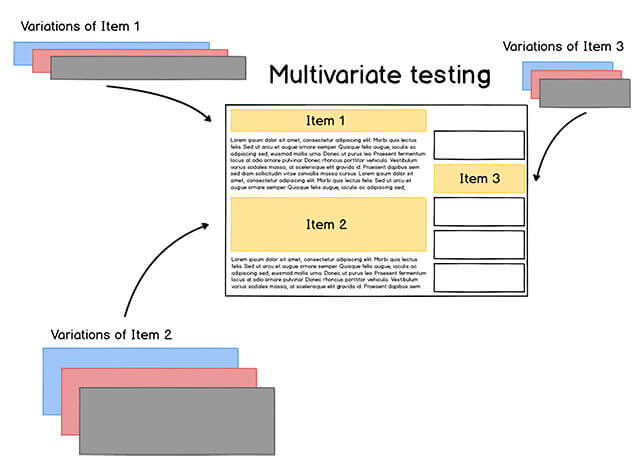The landing page is the landing page to which a user who has clicked on one of our advertisements, banners or newsletters is redirected. This is a specific page that needs to be created specifically for a well-defined purpose; basically, if the user clicks on our “discounted handbags” ad, he will expect to see a catalog of images of the bags on offer and not a series of accessories or, even worse, the Home Page of our site (which perhaps generically sells clothing and fashion accessories).
The most common mistake, in fact, is to focus exclusively on the ad campaign by optimizing it for a high Click-Through Rate and getting targeted traffic, but not paying enough attention to “where” our potential audience will be directed. This is the main reason why high traffic but low conversion rate might depend on.
Best practices for writing a Landing Page that converts
If you invest in advertising but your conversion rate is low, check your landing page with this simple test.
Looking at it, can the user answer these three questions in less than 5 seconds?
Does what you offer meet my need, problem?
Okay, maybe. But why should I choose you? What is your added value (compared to others)?
Okay, you’ve convinced me. What should I do?
In another article we dealt with how to write a landing page, here we would like to offer some insights among the best practices for making one.
- In strategic planning always keep in mind the target audience you are addressing and the goal you intend to achieve.
- Think like a person viewing your ad: users should immediately and easily find what your advertisement offers.
- From “Google’s point of view,” the quality score of a landing page is given based on the same rules applied to Websites: originality and relevance of content, usability and fairness. Krishna Bharat, senior researcher at Google, explains, “Advertisers are coming to the realization that Ads must have a scent that users will likely find useful.”
- Inspire trust and build credibility by making explicit and clear: what you are about, how the user can interact with you and what benefits they get from it, how any data left by the user will be used (privacy and security).
- Test the navigability of the site: speed of loading pages, ability to open them from different browsers; nothing annoys a user more than a page that doesn’t open or doesn’t display properly.
- Include keywords that users commonly use to search for what you want to offer; use Google Trends and keyword research tools by monitoring their traffic and number of results.
- Keep your promises! Give the user only the information they need and are looking for;
- Include a clear call-to-action that prompts action, such as “Play,” “Win,” “Buy Now,” “Learn,” etc.
- Conduct effectiveness testing on your page before sending it online (e.g., A/B testing and Multivariating Testing);
- Monitor its progress and conduct new tests after time: something may have changed and your page may no longer be effective!
Landing Page Test Most Used
A/B Test: submit two alternative proposals

Multivariating Test (MVT): present multiple alternative proposals by acting on different factors (e.g., title, image, call to action)

Is the Landing Page ready to send it online? Tick Check List!
Planning
- Landing page specificity;
- Competitive analysis: is my offer up to date?
- Unique Value Proposition;
- What is the Call to Action? What would I like the user to do?
Architecture
- code correctness;
- Original and attractive layout;
- usability;
- Indexing and tracking by search engines;
- cross-browser and cross-devices verification (if intended for mobile and pc);
- SEO optimization;
- Inserting working tags, forms and links;
- A/B testing;
- impactful, clear and direct design.
Concept and Web Writing
- Clear presentation of the product;
- Presentation of the pluses of your service/product;
- trust and credibility;
- navigability and communicative immediacy;
- call to action;
- persuasive copywriting;
- targeted titles;
- focus on the target audience;
- Use of colors and images (Eye testing).
In general, never take anything for granted; over time, by conducting several tests and trials, you realize how even small changes or variations can completely overturn the results and turn a poor landing into the perfect landing for your goals. Always focus on the People you address and offer them Value, Credibility and Solutions.
